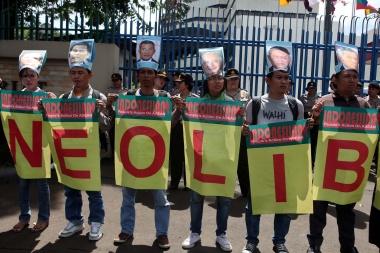
ASEAN Briefing | 29 March 2016
Investment protection in ASEAN – part 2: Bilateral Investment Agreements
By Dezan Shira
In the first segment of our series on investment protection in ASEAN, we explored protection afforded to investors under the ASEAN Comprehensive Investment Agreement (ACIA). Available uniformly to all firms utilizing regional management hubs within ASEAN, this multilateral framework provides a significant source of risk mitigation in a variety of circumstances. For more information pertaining to the specific definitions, dispute resolution mechanisms, and limitations of the agreement, please click here.
In contrast to ASEAN-based investors that are protected under AICA, the level of protection for foreign investors largely depends on bilateral investment treaties (BITs) between individual countries. While some agreements offer similar provisions to ACIA, others are less extensive or unaccommodating and vague. This pattern persists even for ASEAN’s biggest investors: the EU, Japan, and the U.S. For those considering investment within the region, it is critical to understand the level of protection that will be afforded to an investment as a result of its origin.
Investment from the EU
The EU and ASEAN have both expressed interest in creating a comprehensive free trade agreement (FTA) between the two regional associations. At this time, however, most EU members rely on BITs between individual countries. The Netherlands, a popular base for holding companies, has agreements with several South East Asian countries such as Cambodia, Indonesia, Laos, Singapore, Thailand, and Vietnam. Two of its most recent agreements with ASEAN members are with Cambodia and Laos, which came into force in 2006 and 2005, respectively.
The Netherlands’ agreement with Cambodia lists the International Centre for Settlement of Investment Disputes (ICSID), the Court of Arbitration of the International Chamber of Commerce, and alternatives agreed to by special arrangement or according to the United Nations Commission on International Trade Law (UNCITRAL) as options for dispute resolution. On the other hand, current bilateral arrangements between the Netherlands and Laos only list ICSID proceedings as an option for dispute resolution with comparatively little room for alternative arrangements. Further, while there is language for non-discriminatory protection of investments in the treaty with Laos, there is no specific mention of the terms “expropriation” or “nationalization”. The Netherlands’ treaties with Cambodia and Laos exemplify the inconsistent nature of investment protection for foreign investors operating in ASEAN. Even though the Netherlands has specific investment protection clauses with both countries, they are not equally accommodating to investors.
Investment from Japan
Similarly, Japan has an FTA with ASEAN, and BITs with members such as Cambodia, Laos, Myanmar, and Vietnam, but no comprehensive investment protection. While the FTA between Japan and ASEAN delineates guidelines for trade in goods, it only provides general protection for investments. The sides are currently negotiating an amendment to the chapter on investments to add more specific protections and dispute resolution processes.
In terms of BITs, Japan generally has more consistent dispute resolution mechanisms than the Netherlands, holding options for ICSID, UNCITRAL, and alternatives with all of Cambodia, Laos, Myanmar, and Vietnam. However, its asset protection is not as strong as the provisions found in ACIA. While the treaties with Myanmar and Laos both contain compensation in the event of expropriation, compensation is based upon the market value when the investment was expropriated or when the expropriation was announced. In contrast, even though compensation based on market value before expropriation is also not expressly guaranteed in ACIA, the wording found in ACIA at least offers investors more room for argument and interpretation.
Investment from the U.S.
In relation to the Netherlands and Japan, the U.S. has even less certainty in investment protection. Though it signed a Trade and Investment Framework Agreement with ASEAN in 2006 and an FTA with Singapore, it does not have a BIT with any other South East Asian country. As such, the U.S. – and any other country lacking a BIT – must adhere to host countries’ domestic laws. However, the upcoming TPP, which includes ASEAN members Brunei, Malaysia, Singapore, and Vietnam, will give the U.S. more investment protection in the region when it comes into effect.
Harmonization of ASEAN members’ domestic policies has gradually occurred in congruence with promotion of the ASEAN Economic Community (AEC), with countries such as Vietnam realizing the advantages of having a modern investment protection scheme. Myanmar and Laos, ASEAN’s least developed countries, have made some progress but continue to lag behind. These countries have adopted many contemporary legal measures but suffer from vague language and a circumspect commitment to asset protection. Even Malaysia and Thailand, two countries with business-friendly reputations, have not incorporated the principle of national treatment to foreign investors.
In terms of dispute resolution, Singapore, Malaysia, and more recently, Indonesia are supporters of international arbitration. Once again, ASEAN’s less developed countries do not offer as many safeguards as their more developed counterparts. Laos, for example, attempts to provide objectivity through an alternative court system technically independent from the government, but does not preserve access to international arbitration as a right. In the absence of a BIT negotiating greater investment protection, foreign investors have fewer long term guarantees and are more vulnerable to a country changing its laws.
Key Takeaways
Investors establishing operations within ASEAN gain access to preferential investment policies designed to develop the AEC’s integrated single market. ASEAN-based investors benefit from provisions such as most-favored nation (MFN) treatment that ensure competitive access in the region. Singapore, in particular, stands out as an advantageous base for foreign investors due to its stable and low tax environment, ASEAN membership, and bevy of international agreements such as BITs, FTAs, and double taxation agreements. In developing a market entry strategy to ASEAN, foreign investors must be conscious of the region’s varied levels of development and the strategic consequences of establishing operations in one country over another.


